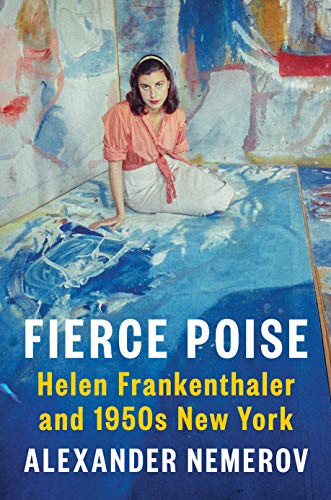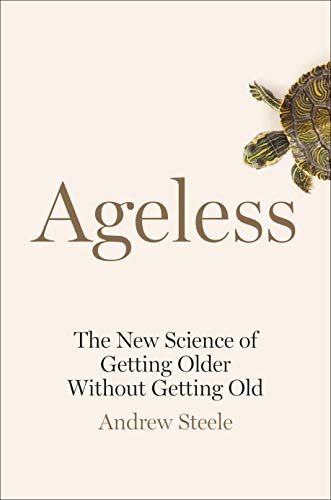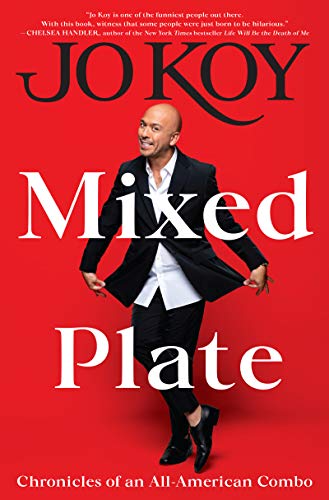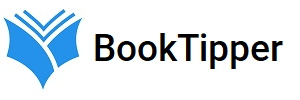
WHEN WOMEN INVENTED TELEVISON
by Jennifer Keishin Armstrong
Must-Read Book of March —Entertainment Weekly
Best Books of March —HelloGiggles
“Leaps at the throat of television history and takes down the patriarchy with its fervent, inspired prose. When Women Invented Television offers proof that what we watch is a reflection of who we are as a people.” —Nathalia Holt, New York Times bestselling author of Rise of the Rocket Girls
New York Times bestselling author of Seinfeldia Jennifer Keishin Armstrong tells the little-known story of four trailblazing women in the early days of television who laid the foundation of the industry we know today.
It was the Golden Age of Radio and powerful men were making millions in advertising dollars reaching thousands of listeners every day. When television arrived, few radio moguls were interested in the upstart industry and its tiny production budgets, and expensive television sets were out of reach for most families. But four women—each an independent visionary— saw an opportunity and carved their own paths, and in so doing invented the way we watch tv today.
Irna Phillips turned real-life tragedy into daytime serials featuring female dominated casts. Gertrude Berg turned her radio show into a Jewish family comedy that spawned a play, a musical, an advice column, a line of house dresses, and other products. Hazel Scott, already a renowned musician, was the first African American to host a national evening variety program. Betty White became a daytime talk show fan favorite and one of the first women to produce, write, and star in her own show.
Together, their stories chronicle a forgotten chapter in the history of television and popular culture.
But as the medium became more popular—and lucrative—in the wake of World War II, the House Un-American Activities Committee arose to threaten entertainers, blacklisting many as communist sympathizers. As politics, sexism, racism, anti-Semitism, and money collided, the women who invented television found themselves fighting from the margins, as men took control. But these women were true survivors who never gave up—and thus their legacies remain with us in our television-dominated era. It’s time we reclaimed their forgotten histories and the work they did to pioneer the medium that now rules our lives.
This amazing and heartbreaking history, illustrated with photos, tells it all for the first time.

REMEMBER
by Lisa Genova
A fascinating exploration of the intricacies of how we remember, why we forget, and what we can do to protect our memories, from the Harvard-trained neuroscientist and bestselling author of Still Alice.
“Using her expertise as a neuroscientist and her gifts as a storyteller, Lisa Genova explains the nuances of human memory”—Steven Pinker, Johnstone Professor of Psychology, Harvard University, author of How the Mind Works
Have you ever felt a crushing wave of panic when you can’t for the life of you remember the name of that actor in the movie you saw last week, or you walk into a room only to forget why you went there in the first place? If you’re over forty, you’re probably not laughing. You might even be worried that these lapses in memory could be an early sign of Alzheimer’s or dementia. In reality, for the vast majority of us, these examples of forgetting are completely normal. Why? Because while memory is amazing, it is far from perfect. Our brains aren’t designed to remember every name we hear, plan we make, or day we experience. Just because your memory sometimes fails doesn’t mean it’s broken or succumbing to disease. Forgetting is actually part of being human.
In Remember, neuroscientist and acclaimed novelist Lisa Genova delves into how memories are made and how we retrieve them. You’ll learn whether forgotten memories are temporarily inaccessible or erased forever and why some memories are built to exist for only a few seconds (like a passcode) while others can last a lifetime (your wedding day). You’ll come to appreciate the clear distinction between normal forgetting (where you parked your car) and forgetting due to Alzheimer’s (that you own a car). And you’ll see how memory is profoundly impacted by meaning, emotion, sleep, stress, and context. Once you understand the language of memory and how it functions, its incredible strengths and maddening weaknesses, its natural vulnerabilities and potential superpowers, you can both vastly improve your ability to remember and feel less rattled when you inevitably forget. You can set educated expectations for your memory, and in doing so, create a better relationship with it. You don’t have to fear it anymore. And that can be life-changing.

FIERCE POISE
by Alexander Nemerov
A dazzling biography of one of the twentieth century’s most respected painters, Helen Frankenthaler, as she came of age as an artist in postwar New York
“The magic of Alexander Nemerov’s portrait of Helen Frankenthaler in Fierce Poise is that it reads like one of Helen’s paintings. His poetic descriptions of her work and his rich insights into the years when Helen made her first artistic breakthroughs are both light and lush, seemingly easy and yet profound. His book is an ode to a truly great artist who, some seventy years after this story begins, we are only now beginning to understand.”–Mary Gabriel, author of Ninth Street Women
At the dawn of the 1950s, a promising and dedicated young painter named Helen Frankenthaler, fresh out of college, moved back home to New York City to make her name. By the decade’s end, she had succeeded in establishing herself as an important American artist of the postwar period. In the years in between, she made some of the most daring, head-turning paintings of her day and also came into her own as a woman: traveling the world, falling in and out of love, and engaging in an ongoing artistic education. She also experienced anew–and left her mark on–the city in which she had been raised in privilege as the daughter of a judge, even as she left the security of that world to pursue her artistic ambitions.
Brought to vivid life by acclaimed art historian Alexander Nemerov, these defining moments–from her first awed encounter with Jackson Pollock’s drip paintings to her first solo gallery show to her tumultuous breakup with eminent art critic Clement Greenberg–comprise a portrait as bold and distinctive as the painter herself. Inspired by Pollock and the other male titans of abstract expressionism but committed to charting her own course, Frankenthaler was an artist whose talent was matched only by her unapologetic determination to distinguish herself in a man’s world.
Fierce Poise is an exhilarating ride through New York’s 1950s art scene and a brilliant portrait of a young artist through the moments that shaped her.

AGELESS
by Andrew Steele
A startling chronicle by a brilliant young scientist takes us onto the frontiers of the science of aging, and reveals how close we are to an astonishing extension of our life spans and a vastly improved quality of life in our later years.
Aging–not cancer, not heart disease–is the true underlying cause of most human death and suffering. We accept as inevitable that as we advance in years our bodies and minds begin to deteriorate and that we are ever more likely to be felled by dementia or disease. But we never really ask–is aging necessary? Biologists, on the other hand, have been investigating that question for years. After all, there are tortoises and salamanders whose risk of dying is the same no matter how old they are. With the help of science, could humans find a way to become old without getting frail, a phenomenon known as “biological immortality”?
In Ageless, Andrew Steele, a computational biologist and science writer, takes us on a journey through the laboratories where scientists are studying every bodily system that declines with age–DNA, mitochondria, stem cells, our immune systems–and developing therapies to reverse the trend. With bell-clear writing and intellectual passion, Steele shines a spotlight on a little-known revolution already underway.

MIXED PLATE
by Jo Koy
A stunning, hilarious memoir displaying Koy’s “wide-ranging comedic talent and abundant wells of perseverance” (Kirkus Reviews, starred). Mixed Plate illuminates the burning drive and unique humor that make Jo Koy one of today’s most successful comedians. Includes never-before-seen photos.
Well guys, here it is—my story. A funny, sad, at times pathetic but also kick-ass tale of how a half-Filipino, half-white kid whose mom thought (and still thinks) his career goal was to become a clown became a success. Not an overnight success, because that would have made for a really short read, but an All-American success who could give my immigrant mom the kind of life she hoped for when she came to this country, and my son the kind of life I wished I’d had as a kid. With all the details of what it felt like to get the doors closed in my face, to grind it out on the road with my arsenal of dick jokes, and how my career finally took off once I embraced the craziness of my family, which I always thought was uniquely Filipino but turns out is as universal as it gets.
In this book, I’ll take you behind the mic, behind the curtain—OK, way behind it. From growing up with a mom who made me dance like Michael Jackson at the Knights of Columbus, to some real dark stuff, the stuff we don’t talk about often enough as immigrants. Mental health, poverty, drinking. And show you the path to my American Dream. Which was paved with a lot of failure, department store raffle tickets to win free color televisions, bad jokes, old VHS tapes, a motorcycle my mom probably still hates, the only college final I aced (wasn’t math), and getting my first laugh on stage. There’s photo evidence of it all here, too.
In this book, I get serious about my funny. And I want to make you laugh a little while I do it. I’m like Hawaii’s favorite lunch—the mixed plate. Little bit of this, a little bit of that. My book Mixed Plate is too.
Still Hot in Non-Fiction & Biography

THE CODE BREAKER
by Walter Isaacson
The bestselling author of Leonardo da Vinci and Steve Jobs returns with a gripping account of how Nobel Prize winner Jennifer Doudna and her colleagues launched a revolution that will allow us to cure diseases, fend off viruses, and have healthier babies.
When Jennifer Doudna was in sixth grade, she came home one day to find that her dad had left a paperback titled The Double Helix on her bed. She put it aside, thinking it was one of those detective tales she loved. When she read it on a rainy Saturday, she discovered she was right, in a way. As she sped through the pages, she became enthralled by the intense drama behind the competition to discover the code of life. Even though her high school counselor told her girls didn’t become scientists, she decided she would.
Driven by a passion to understand how nature works and to turn discoveries into inventions, she would help to make what the book’s author, James Watson, told her was the most important biological advance since his co-discovery of the structure of DNA. She and her collaborators turned a curiosity of nature into an invention that will transform the human race: an easy-to-use tool that can edit DNA. Known as CRISPR, it opened a brave new world of medical miracles and moral questions.
The development of CRISPR and the race to create vaccines for coronavirus will hasten our transition to the next great innovation revolution. The past half-century has been a digital age, based on the microchip, computer, and internet. Now we are entering a life-science revolution. Children who study digital coding will be joined by those who study genetic code.
Should we use our new evolution-hacking powers to make us less susceptible to viruses? What a wonderful boon that would be! And what about preventing depression? Hmmm…Should we allow parents, if they can afford it, to enhance the height or muscles or IQ of their kids?
After helping to discover CRISPR, Doudna became a leader in wrestling with these moral issues and, with her collaborator Emmanuelle Charpentier, won the Nobel Prize in 2020. Her story is a thrilling detective tale that involves the most profound wonders of nature, from the origins of life to the future of our species.

HOW TO AVOID A CLIMATE DISASTER
by Bill Gates
#1 NEW YORK TIMES BEST SELLER
In this urgent, authoritative book, Bill Gates sets out a wide-ranging, practical—and accessible—plan for how the world can get to zero greenhouse gas emissions in time to avoid a climate catastrophe.
Bill Gates has spent a decade investigating the causes and effects of climate change. With the help of experts in the fields of physics, chemistry, biology, engineering, political science, and finance, he has focused on what must be done in order to stop the planet’s slide to certain environmental disaster. In this book, he not only explains why we need to work toward net-zero emissions of greenhouse gases, but also details what we need to do to achieve this profoundly important goal.
He gives us a clear-eyed description of the challenges we face. Drawing on his understanding of innovation and what it takes to get new ideas into the market, he describes the areas in which technology is already helping to reduce emissions, where and how the current technology can be made to function more effectively, where breakthrough technologies are needed, and who is working on these essential innovations. Finally, he lays out a concrete, practical plan for achieving the goal of zero emissions—suggesting not only policies that governments should adopt, but what we as individuals can do to keep our government, our employers, and ourselves accountable in this crucial enterprise.
As Bill Gates makes clear, achieving zero emissions will not be simple or easy to do, but if we follow the plan he sets out here, it is a goal firmly within our reach.

BREATH
by James Nestor
A New York Times Bestseller
A Washington Post Notable Nonfiction Book of 2020
Named a Best Book of 2020 by NPR
“A fascinating scientific, cultural, spiritual and evolutionary history of the way humans breathe—and how we’ve all been doing it wrong for a long, long time.” —Elizabeth Gilbert, author of Big Magic and Eat Pray Love
No matter what you eat, how much you exercise, how skinny or young or wise you are, none of it matters if you’re not breathing properly.
There is nothing more essential to our health and well-being than breathing: take air in, let it out, repeat twenty-five thousand times a day. Yet, as a species, humans have lost the ability to breathe correctly, with grave consequences.
Journalist James Nestor travels the world to figure out what went wrong and how to fix it. The answers aren’t found in pulmonology labs, as we might expect, but in the muddy digs of ancient burial sites, secret Soviet facilities, New Jersey choir schools, and the smoggy streets of São Paulo. Nestor tracks down men and women exploring the hidden science behind ancient breathing practices like Pranayama, Sudarshan Kriya, and Tummo and teams up with pulmonary tinkerers to scientifically test long-held beliefs about how we breathe.
Modern research is showing us that making even slight adjustments to the way we inhale and exhale can jump-start athletic performance; rejuvenate internal organs; halt snoring, asthma, and autoimmune disease; and even straighten scoliotic spines. None of this should be possible, and yet it is.
Drawing on thousands of years of medical texts and recent cutting-edge studies in pulmonology, psychology, biochemistry, and human physiology, Breath turns the conventional wisdom of what we thought we knew about our most basic biological function on its head. You will never breathe the same again.
